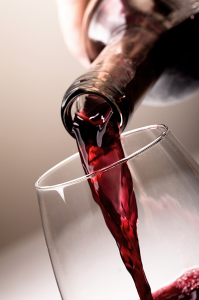
Serving wine at restaurants is incredibly important in the overall ‘wine experience’ you offer to your clientele – and this extends to both casual eateries and fine dining establishments.
Knowing how to serve wine at its most optimum can range from factors that maximise the quality of the varietal itself, to the way its presented to the consumer.
Temperature
Serving wine at the correct temperature brings out the best qualities in the wine. The reason white wines are best served chilled is that they contain very little tannin and have a higher acidity than red wines. Chilling white wines brings out the fruity flavour, making the acidity more pronounced and the wines more enjoyable and refreshing. The ideal serving temperatures of different wine styles are;
- Sparkling & Champagne 6°C – 8°C
- White Wine 8°C – 12°C
- Rosé 9°C – 12°C
- Red Wine 16°C – 18°C
Timing
Wine should be brought to the table as soon as possible. This is especially important when serving red wines in order to allow them to breathe. If a decanter is not available, offer to pour the wine into the glass so it may breathe in the glass. Simply, removing the lid or cork has no real impact on the wine in the short term despite widespread belief.
Presentation
-
Always present the bottle on the right of the person who ordered the wine. The bottle should not be open at this stage. Make sure the label is facing the host and repeat the year, the winery and the type of wine to verify it is the correct one. Await approval before opening.
-
Pour approximately 30ml of wine into the host’s glass, await approval. If they approve, then serve the wine clockwise around the table, ladies first and finishing with the host, pouring even amounts into each glass. Give the bottle a slight twist of the wrist, counter clockwise when finishing each pour to prevent dripping. Always pour with the glass on the table and try to avoid contact between bottle and glass.
-
After all guests have been served, place the bottle to the right of the host with the label facing them. If a cold wine is being served, then place the ice bucket next to the host.
-
Keep an eye on the table and replenish glasses as needed.
Tips
-
Know your wine list and be comfortable in recommending wines to customers in a friendly, helpful manner.
-
Have a basic understanding of wine pairing. If all you know is that white wine works well with seafood and salads and red wine is good with meat then at least that’s a start. If you want to learn more about food matching with specific types of wine http://www.foodandwinepairing.org/ is a good resource.
- Be sure to ask what wines the customer usually likes, because even if you suggest a perfectly matched wine to their food, wine tasting is a completely subjective experience!
Cheers!
Peter Papanikitas – Managing Director EWD

Leave a Comment